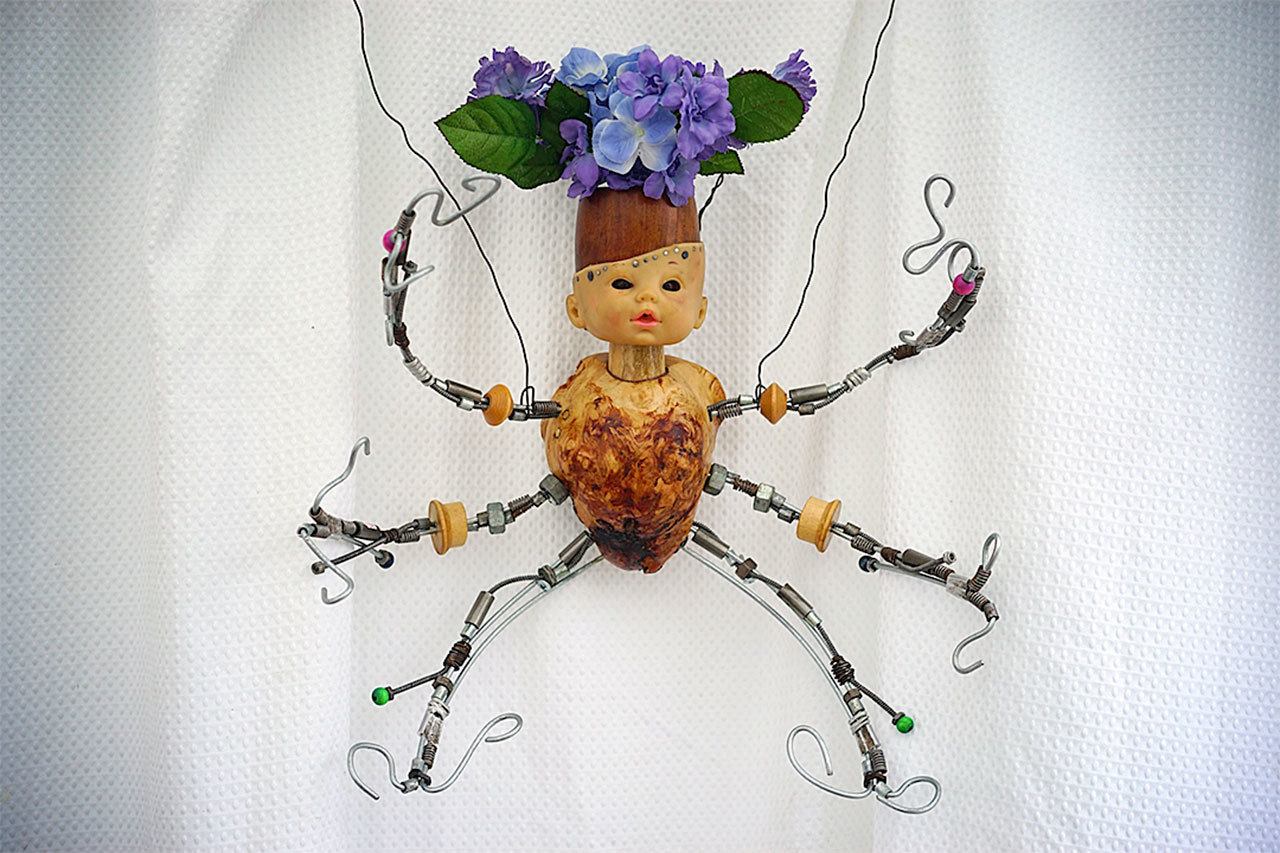When most people look at a chair, they see a functional piece of furniture. Not so for island artist Ken Judd. He sees a collection of parts, which he promptly disassembles. Springs from an antique chair become the base of a halfhumanoid, half-airplane construction, an “airplane guy” that Judd fondly calls Red Eye as in “the red eye is on time.”
“There’s a little poetry in the titles,” Judd said during a recent interview at his north end studio, which will be open to the public during the island’s studio tour slated for the first two weekends in December.
If there’s a little poetry in the titles, then there’s a whole lot of stuff lining the shelves and surfaces in Judd’s creative cave, where he constructs artwork — out of disparate objects — that tickles the funnybone, intrigues the mind or evokes a somber response.
“Some artists have the texture of a canvas, and they are mixing colors,” Judd said leading the way into his studio. “The majority of things I use are found — a round of cedar, tracks for a drawer, a spatula, popsicle sticks. You’ll see there is not an inch of clear space because I have to have everything laid out. My work is a composition of used materials. My drill with six bits are my paintbrushes.”
The self-taught artist, 60, credits his fourth-grade art teacher for planting the seed of artistic possibility in him when she “acknowledged” his drawing of a cat and that, he said, was it.
By the time he left high school, Judd moved toward nonrepresentational drawings as he focused on landscapes. How he made the leap into the third dimension is a puzzle even to Judd. He tried his hand at it in 1998. Starting with jewelry, he exaggerated the size and shape of a barrette into a large, glass wall hanging, but the fragility of the material was not to his liking.
The work he is doing now, and the quality of the constructions, began in earnest in 2010, two years before he and his wife, Maria Glanz, and their son moved to the island from Seattle. Before then, Judd worked as a landscape designer and house painter, which he believes are disciplines for creating art.
“My art school is work experience,” Judd said. “I’ve also worked in kitchens, packed trucks for moving exquisite furniture in Malibu, packed Chagalls for clients. I was exposed to art and developed integrity as a skilled worker. I also listened to a lot of friends who went to art school, and I realized I didn’t want to be told what I was.”
Judd has two loyal patrons, who each has substantial collections of his work. He’s shown at Vashon Allied Arts Gallery and Heron’s Nest, and is contemplating joining Valise Gallery. Yet, Judd’s preference is to sell his art through the studio tour, art fairs and private house showings because he likes to engage with the buyers.
“It’s not just about selling,” he said. “One of my tag lines is, ‘It’s an adoption process.’ People buy my work because it is doing something for them, and I see it. I like connecting, and I can’t lurk around the galleries. That’s why I like the studio tour.”
If connecting with buyers who “adopt” his art pieces is a priority for Judd, then the fact that he talks to the objects he disassembles and reconstructs makes a certain sense.
“There is this whole conversation that goes on with me and the thing. It speaks to me, and then I ask, ‘Would you mind if I do this or that,’” he said with a warm laugh. “I mean it sounds insane, but it’s a divine madness, as they say in the movies.”
Divine madness seems an apt term for the creative process, which for Judd, shows up in two ways. He’ll see something in his imagination, draw it out and then work within the constraints of the materials he has. Other times the form dictates what it will become — like the piece of burl that became “Baby buggy,” part insect, part doll and a definite play on words. Either way, assembling things that already exist is what keeps Judd stimulated.
“It’s a lot like being a cook and putting it all together,” he said.


